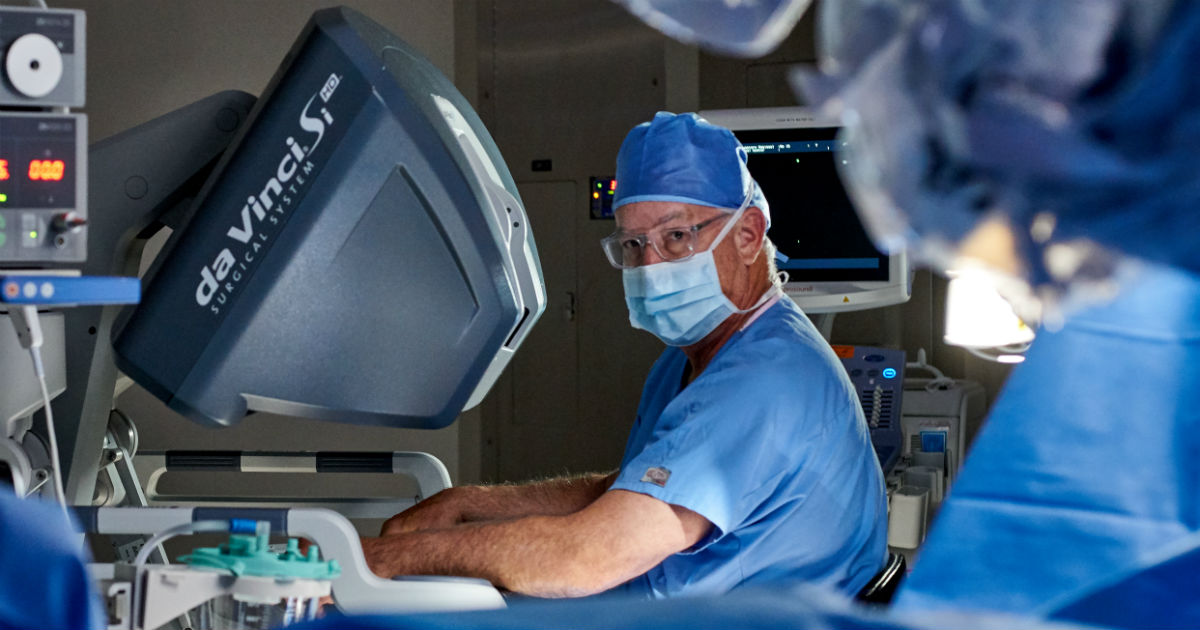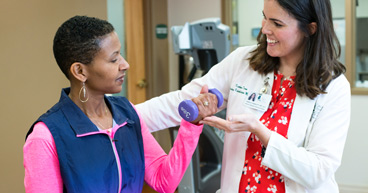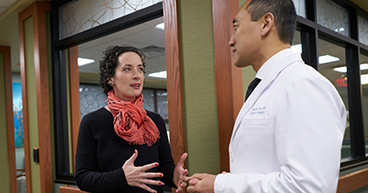
Robotic surgery may offer some patients a less invasive option to traditional open surgery. The da Vinci® Surgical System allows doctors to operate through small incisions that may require fewer stitches, reducing pain, the risk of infection and recovery time for many patients. The technology is designed to give surgeons better vision and control, allowing for more precise operations.
But robotic surgery may not be an appropriate treatment option for some cancers. Before having surgery of any kind, there are a number of factors to consider, such as whether surgery is the recommended approach for your disease, or whether open surgery may be a better option for the type and location of your type of cancer.
“The major benefit of robotic surgery is the ability to perform more complex operations than can readily be done with standard laparoscopic equipment while still giving the patient's all the benefits of minimally invasive surgery,” says Diego Muilenburg, MD, Medical Director of Surgical Oncology at Cancer Treatment Centers of America® (CTCA) in Phoenix.
Here are a few things to consider about robotic surgery:
Make sure you are a candidate. The benefits of robotic surgery may be promising, but check with your doctor to determine whether you are a candidate. Robotic surgery is still a form of surgery, so the patient must be healthy enough for the procedure.
Traveling may be worth the effort. Cancer patients should travel only when necessary, especially during the COVID-19 pandemic. But if robotic surgery is not available where you originally planned to treat, you may want to consider seeking a second opinion at a hospital with more advanced treatment options. Traveling for treatment may sound stressful, but receiving more advanced treatment options may be worth the effort. If possible, travel by car rather than by plane or public transportation.
Find the right doctor. Surgeons need to undergo extensive, specialized training to perform robotic surgery. This training builds on the surgeon’s existing skills and expertise, and requires him or her to complete numerous hours of practice. Don’t be afraid to ask your doctor how many robotic procedures he or she has performed, and choose the doctor whose expertise makes you feel the most comfortable.
Understand the risks. While there are many advantages to robotic surgery, it may still carry some risks. Ask your doctor to explain the procedure and detail what to expect from the beginning. Ask lots of questions, and ask to see the equipment that’ll be used, if that will give you some level of comfort.
Be prepared for recovery. While a robotic procedure may greatly reduce your post-surgery recovery time, your body will still need time to regain its strength. Plan accordingly, and be prepared to rest and recoup immediately following the procedure.
Read up on the benefit of new technologies. Years ago, cancer treatment options were much more limited than they are today. Ongoing research has led to new, advanced technologies that are being used to treat many different types of cancer. Exploring all your options may help you make more informed decisions about your care.


